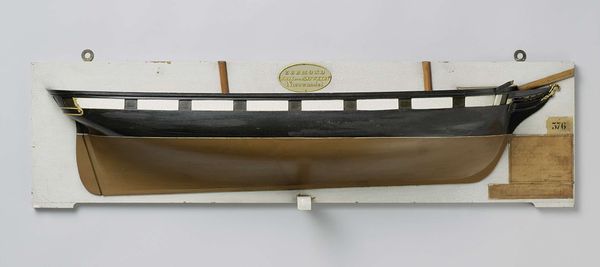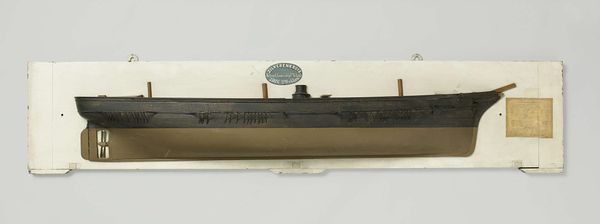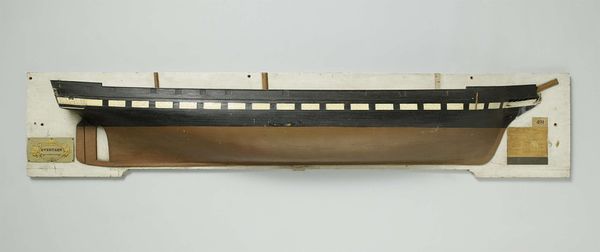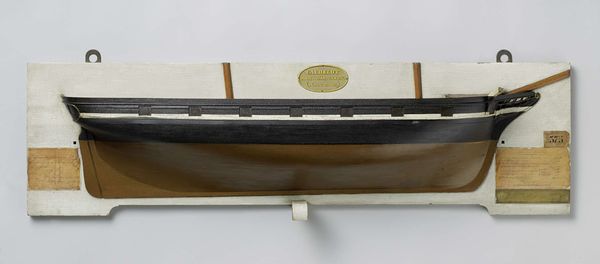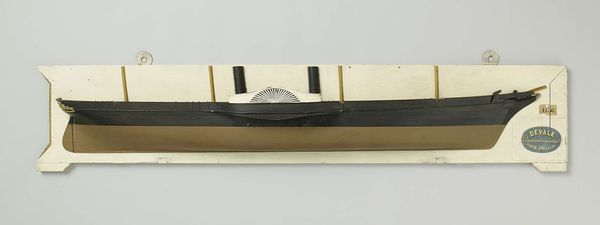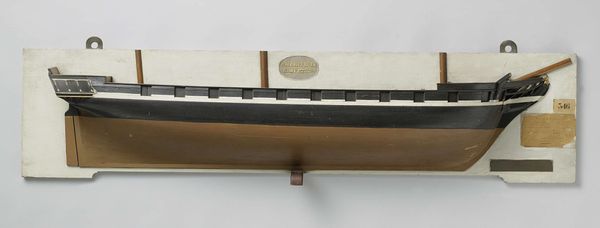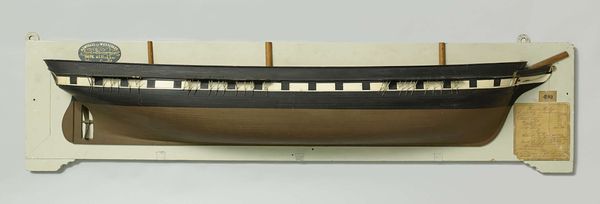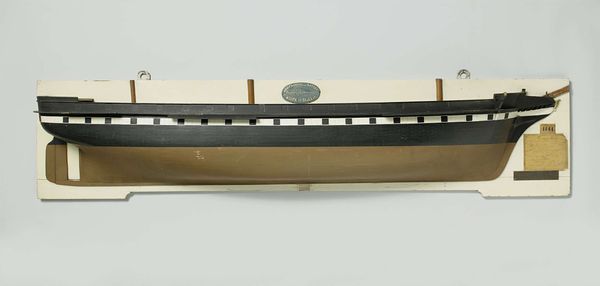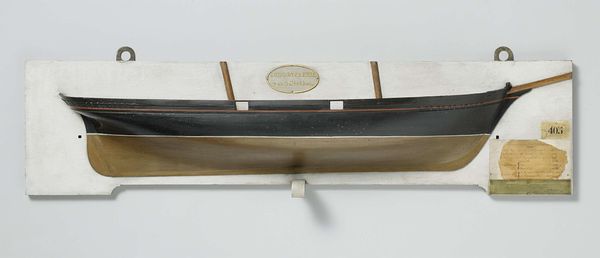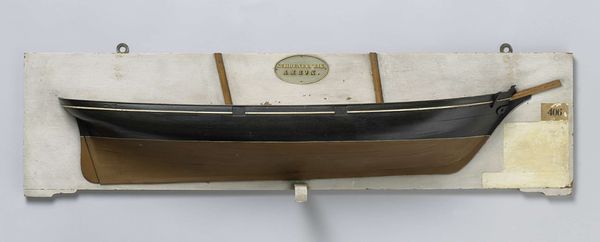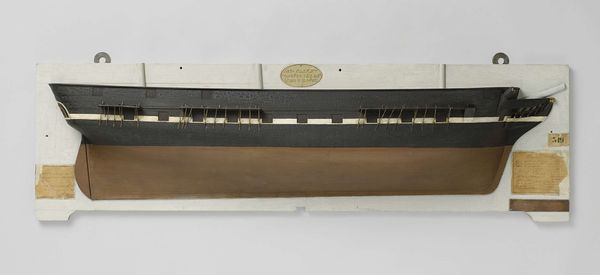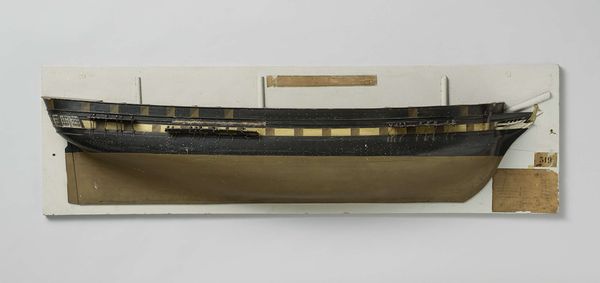
carving, sculpture, wood
#
carving
#
landscape
#
sculpture
#
wood
#
realism
Dimensions: height 32.5 cm, width 106.5 cm, depth 15 cm
Copyright: Rijks Museum: Open Domain
Curator: Let's discuss this intriguing "Half Model of a 12-Gun Brig," dating approximately from 1846 to 1850, attributed to Rijkswerf Amsterdam. It’s a wood carving presented as a sculpture. What are your first impressions? Editor: Immediately, I see the ghost of colonialism. It feels both utilitarian and haunting. The precision of the craftsmanship, contrasted with its probable purpose—gunboat diplomacy, extraction—it evokes a deep ambivalence. Curator: Indeed. Half models like this served practical purposes within naval architecture. They allowed builders to visualize the hull design, experiment with hydrodynamics, and refine construction techniques before committing to a full-scale build. Editor: But who benefited from that precision, from that efficiency? The artistry is undeniable, yet inseparable from its socio-political function. It’s about power projection, maritime trade under imperial agendas... Who was on these ships? What was their experience? Curator: The social hierarchy inherent in maritime power during this period is impossible to ignore. Ships were microcosms of society, stratified by class, race, and gender. Access, opportunity, and even survival differed radically. This model, devoid of figures, can serve as a prompt to remember those unseen participants. Editor: Absolutely. And thinking about the Rijkswerf, a state-owned dockyard, we have to consider the conditions of labor, the politics of naval expansion, the complex web of institutional support. Curator: Examining institutional history offers insight. It unearths not only technological advancements but also the values, beliefs, and power structures of the society that birthed it. This object really exemplifies that interplay. Editor: Right, the elegance and craftsmanship don’t negate the harsh realities associated with the global shipping economy in the mid-19th century. It calls for an expanded, critically engaged view of that time period. Curator: It is fascinating how one object, seemingly so simple, contains so much, revealing layers of meaning. Editor: Exactly! And perhaps inspiring more nuanced understandings of our relationship to history.
Comments
No comments
Be the first to comment and join the conversation on the ultimate creative platform.
